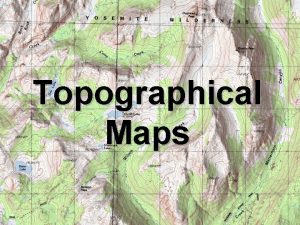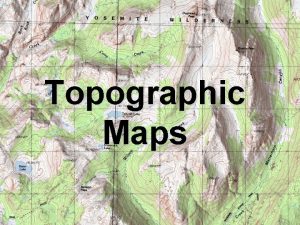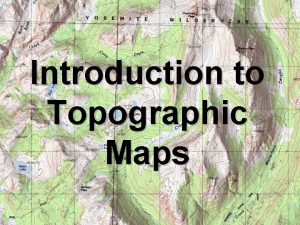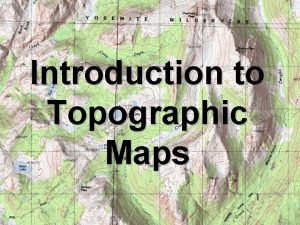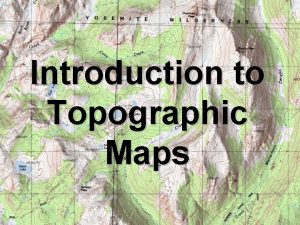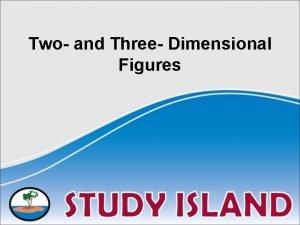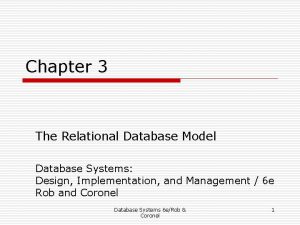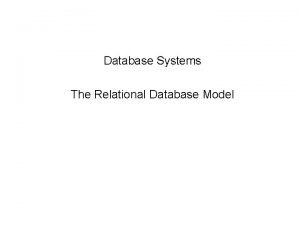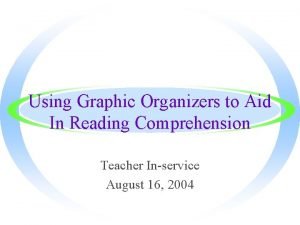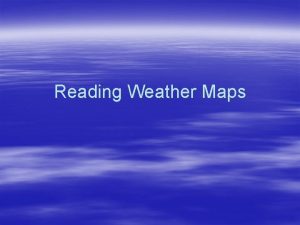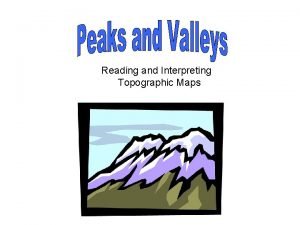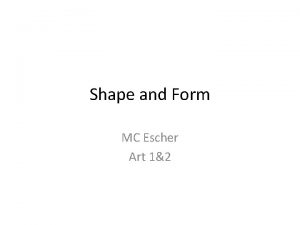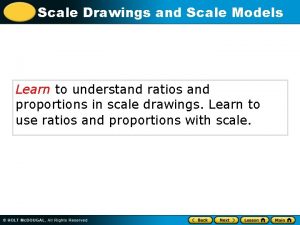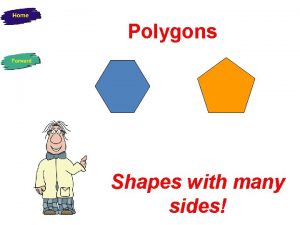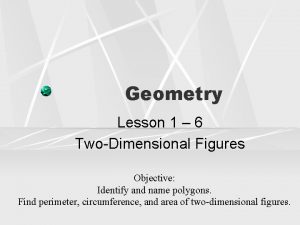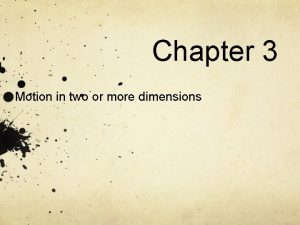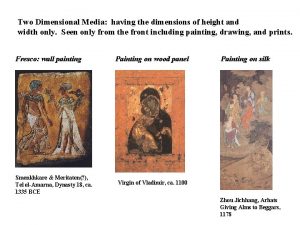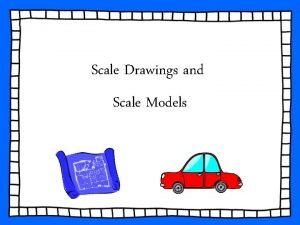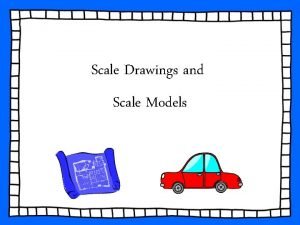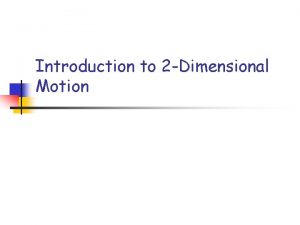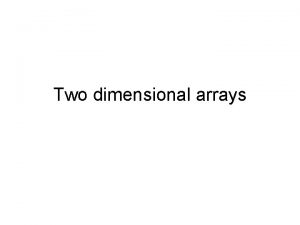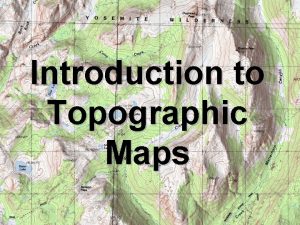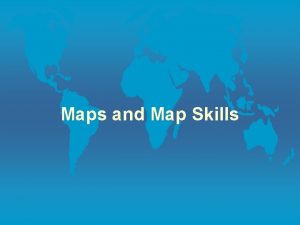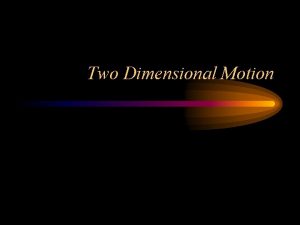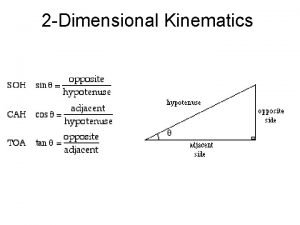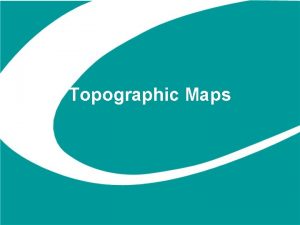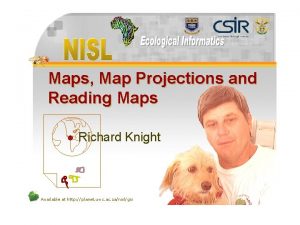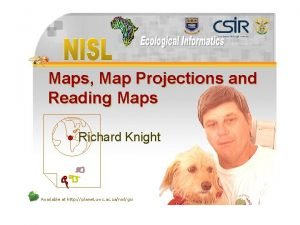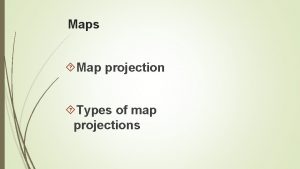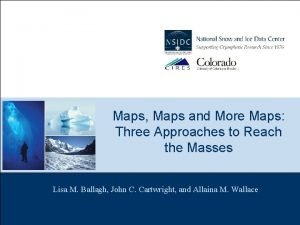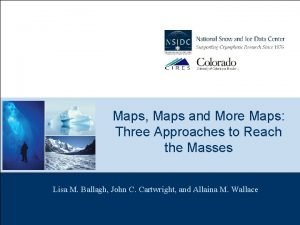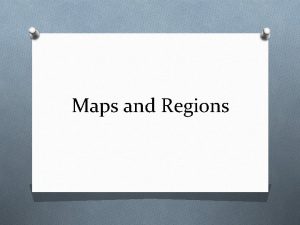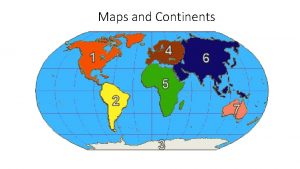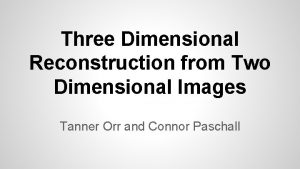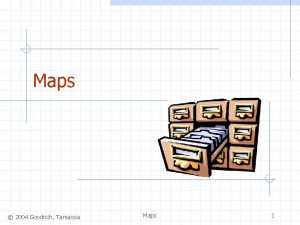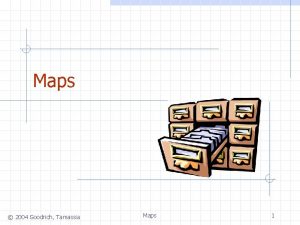Maps and Map Reading Map is two dimensional



























- Slides: 27

Maps and Map Reading

Map is two dimensional representation of the three dimensional world we are in. All maps will have the same basic features in common and map reading is all about learning to understand their particular “language”. Map is any geographic image or physical representation of the environment, drawn to scale, usually on a flat surface. The term chart is most often applied to maps of the sea, or at least, to maps used by sailors and fliers. In a broader term, map refers more particularly to a representation of land. The science of making maps is called cartography. The word map comes from the Latin word mappa meaning “napkin” or “cloth” and the word chart comes from the Greek chartos which means “leaf” or “sheet of paper”.

Kinds of Maps 1. Terrain representation maps Maps of this kind includes hachure, contour, layer tint, and shaded relief maps. a) Physiographic diagrams or landform maps – present oblique views of mountains, hills and other elevated features. b) Block diagrams – are three dimensional perspective representation of the earth’s crust showing the surface of the earth and cross sections of the subsurface formations. c) Relief or Physical maps – show natural feature such as mountains, ocean, rivers and islands.

Terrain Representation Map

2. Topographic maps A topographic map is a type of map characterized by large scale detail and quantitative representation of relief, usually using contour lines in modern mapping, but historically using a variety of methods. Traditional definitions require a topographic map to show both natural and man made features. A topographic map uses markings such as contour lines to simulate three dimensional topography of the land on a two dimensional map.

Topographic Map

3. Cadastral maps Show land boundaries and subdivisions and are used primarily to describe property and to define ownership. Commonly includes details of the ownership, the tenure, the precise location (some include GPS coordinates), the dimensions (and area), the cultivations if rural, and the value of individual parcels of land.

Cadastral Map

4. General Atlas maps Individual states, countries and regions are usually covered by atlas maps. They include such information as elevation and terrain, roads and railroads, locations of cities and towns regional drainage patterns, selected spot elevations and locations of historical or archeological interest. 5. Political maps Includes political boundaries, political affiliations, place – names such as capital cities and other important towns and selected physical features. A political map is a map that shows lines defining countries states or territories. It is unlike other maps in that its purpose is to show borders. A political map also makes a deliberate political statement about which areas of the earth belong to a country or state.

Atlas Map

5. Political maps Includes political boundaries, political affiliations, place – names such as capital cities and other important towns and selected physical features. A political map is a map that shows lines defining countries states or territories. It is unlike other maps in that its purpose is to show borders. A political map also makes a deliberate political statement about which areas of the earth belong to a country or state.

Political Map

6. Thematic maps Maps of this type normally illustrate one particular subject and may be quantitative or qualitative. a) Quantitative thematic maps – illustrate statistical data and can be presented using : 1. Isorithmns – which are having lines connecting points of equal value (ex. map of equal average precipitation) 2. Graduated circle maps – where sizes indicate totals (ex. petroleum production) 3. Cloropleth maps – where shading or coloring indicates value or amounts 4. Dot maps – showing distribution by dots with assigned values 5. Superimposed diagrams b) Qualitative thematic maps – illustrate distribution on which no percentage, ratios or other absolute quantities are involved. Simply show the distribution of a particular quality such as climate, soils, as vegetation.

QUANTITATIVE THEMATIC MAP

QUALITATIVE THEMATIC MAP

7. Flow maps Direction of movement is shown on maps of this type. Some such maps have set line widths or lengths to indicate fixed amounts and some have a line width that varies with the amount being shown. Transportation maps showing shipping routes or air routes are examples of flow maps.

8. Aeronautical charts These are designed specifically for air navigation. The charts show features important for flying by visual flight rules (VFR) or the instrument flight rules (EFR) a) Visual navigation charts – identify those topographic features and contour lines that are significant to pilots and navigators. b) Instrument charts – show the control system of the National Airspace System and maybe either radio navigation charts or instrument approach procedure charts. c) Nautical chart – provide navigational aids for shipping

9. Geologic maps Maps of this type show the distribution of rocks and other deposits that occur at the surface of the earth as though the soil were stripped away. These maps indicate fault lines, age of rocks, and location of fossil samples and other features of geologic interest. 10. Road map and city maps These are perhaps the most widely used maps. a) Road maps show the location of roads in an area and the distance between places, with additional information included. b) City maps are generally at a larger scale and show greater detail than road maps.


ROAD AND CITY MAP

How to read maps Various kinds of information are printed on maps to help the reader, including the map’s title, scale, latitude and longitude, grid, and symbols used to indicate relief and other data and the legend that explains the symbols. Map reading begins by noting the title. This may be the name of the most important place on the map. It may be the name of the region covered by the map, or the description of the content of the map.

Some maps and globe terms 1. Scale. It is the ratio of the distances and areas shown on the map the corresponding distances and areas on the earth’s surface. Scale is commonly expressed in three ways by a statement such as on inch to a mile, meaning that one inch on the map represents one mile on earth. By a representative fraction (RF) such as 1: 1, 000. This means that one unit of distance on the map represents 1, 000 units of distance on the earth. Ex: One inch on the map represents 1, 000 inches or nearly 16 miles on the earth, and one centimeters represents 1, 000 centimeters or 10 kilometers. By a graphic scale such as !0____! miles_____!10 The advantage of this scale is that it remains true even if the map is photographically enlarged or reduced.

2. Grid. The crisscross reference lines on a map. The grid provides a frame of reference for locating points on the map. 3. Hemisphere. Half of a round objects. The equator divides the earth into northern and southern hemispheres. The prime meridian and the 180 th meridian divide it into eastern and western hemisphere. 4. Latitude. The distance in degrees north or south of the equator (0 latitude). Parallel latitude is an imaginary line circling the earth and connecting points on the earth’s surface having the same latitude. Parallel of latitudes never meet. They are numbered from 00 to 900 north and south of the equator. High latitudes – are latitudes between 600 and the pole in the Northern and Southern hemispheres. Low latitudes – are latitudes extending north and south of the equator to 300 latitude. Middle latitude – are latitudes between the high and low latitudes.

5. Longitude. The distance in degrees east or west of prime meridian (0 latitude). The line connecting the north and south pole is called meridian. A meridian is half of a great circle. For historical reasons, the meridian that runs through Greenwich, England, is assigned latitude of 00. It is called the Greenwich Meridian or Prime Meridian. 6. International Date Line. An imaginary line at roughly 1800 longitude where a calendar day begins and ends. Roughly along 180° longitude, (opposite Greenwich at meridian), it corresponds to the time zone boundary separating − 12 and +12 hours. (Note: the IDL is drawn with diversions to pass around some territories and island groups. ) 7. Distance. Straight line measurements can be taken from a map most accurately with a pair of dividers. Any of the scale representations may be used to determine distance.

8. Direction. The tops of most maps head north but not always. Indicators of direction are: a) Simple arrow pointing north b) Two arrows, starting from the same point that shows the difference between true north and magnetic north. There are two kinds: 1. double barbed arrow (star stripped) points to true north 2. single barbed arrow – denotes magnetic north. c) Spear shaft topped by a “y”. is the grid north, where the direction of the vertical lines in a rectangular grid that are not meridians, therefore not true north. 9. Symbols and convention. A symbol or a conventional sign is used to represent any feature on a map that cannot be shown clearly and to scale. These symbols become words with definite meaning for the map reader. Though many symbols such as those for railroads, highways, churches and schools are familiar, these are usually a key to their meaning.

10. Legends or keys provide explanation for the various symbols used. Any symbol used on a map that is not self – explanatory should be explained in the legend. 11. Relief (or Physical map). Shows natural features such as mountains, oceans, rivers and islands. This allows easy recognition of individual landforms. 12. Contour lines. Are lines drawn on a map to join all points in the same height above sea level. Contour lines are lines drawn on a map connecting points of equal elevation. If you walk along a contour line you neither gain or lose elevation. 13. North pole. The point farthest north on the earth’s surface(900). Lying diametrically opposite the South Pole, it defines geodetic latitude 90° North, as well as the direction of True North. At the North Pole all directions point south; all lines of longitude converge there, so its longitude can be defined as any degree value.

14. South pole. The point farthest south on the earth’s surface (900). Situated on the continent of Antarctica, it is the site of the United States Amundsen Scott South Pole Station, which was established in 1956 and has been permanently staffed since that year. 15. Degree. A circle can be divided into 360 degrees. A degree is represented by a symbol ( 0 ), is divided into 60 minutes, represented by the symbol ( ‘ ). Latitude and longitude are shown in degrees. 16. Co-ordinates. A set of two numbers ( usually latitude and longitude ) used in specifying the location of a point. 17. Compass rose. A symbol used show direction on a map. This is a figure on a map or nautical chart used to display the orientation of the cardinal directions, — north, south, east, and west. It is also the term for the graduated markings found on the traditional magnetic compass.
 Circular motion is one dimensional or two dimensional
Circular motion is one dimensional or two dimensional Pre reading while reading and post reading activities
Pre reading while reading and post reading activities A topographic map is a two dimensional model
A topographic map is a two dimensional model A topographic map is a two dimensional model
A topographic map is a two dimensional model A topographic map is a two dimensional model
A topographic map is a two dimensional model Gradient topographic map
Gradient topographic map A topographic map is a two dimensional model
A topographic map is a two dimensional model Reittihaku google maps
Reittihaku google maps Two dimensional motion and vectors
Two dimensional motion and vectors Two and three dimensional figures
Two and three dimensional figures Two-dimensional structure composed of rows and columns
Two-dimensional structure composed of rows and columns Two-dimensional structure composed of rows and columns
Two-dimensional structure composed of rows and columns Story maps for reading comprehension
Story maps for reading comprehension Reading weather maps
Reading weather maps Interpreting topographic maps
Interpreting topographic maps Any two-dimensional area with a recognizable boundary.
Any two-dimensional area with a recognizable boundary. A proportional, three-dimensional model of an object
A proportional, three-dimensional model of an object 2 dimensional shape with 8 angles
2 dimensional shape with 8 angles 1 6 practice two dimensional figures
1 6 practice two dimensional figures Two dimensional motion
Two dimensional motion Eysenck’s two-dimensional scheme
Eysenck’s two-dimensional scheme Python 2 dimensional array
Python 2 dimensional array What are two dimensional analysis of objectives
What are two dimensional analysis of objectives What is two-dimensional media
What is two-dimensional media How to do scale drawings and models
How to do scale drawings and models What is a proportional two dimensional drawing of an object
What is a proportional two dimensional drawing of an object Two dimensional motion definition
Two dimensional motion definition Statics wrench example
Statics wrench example


